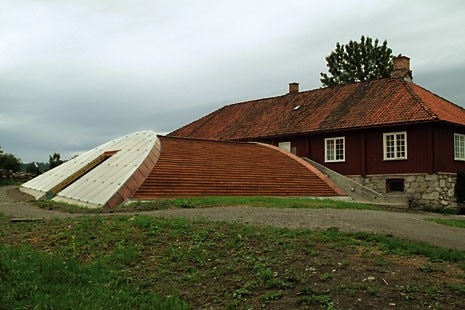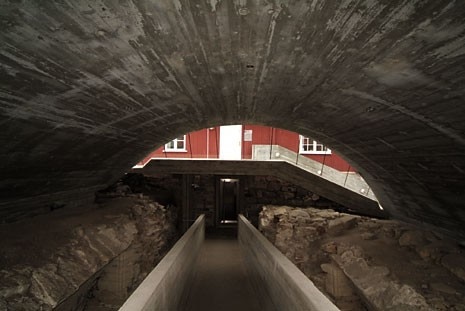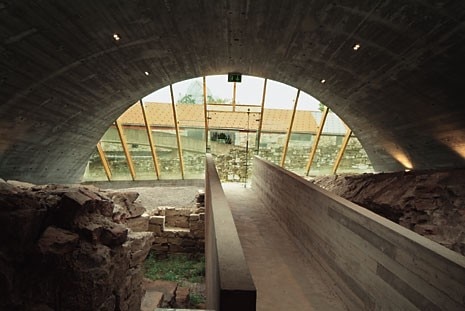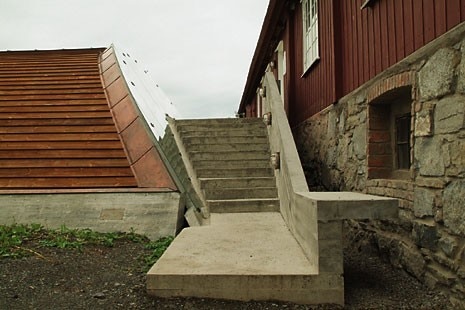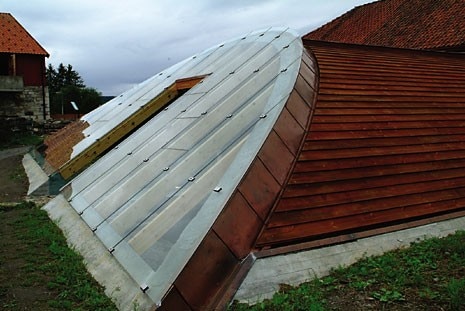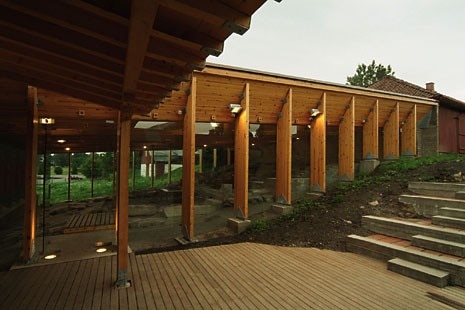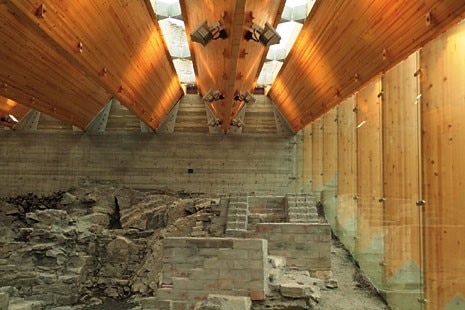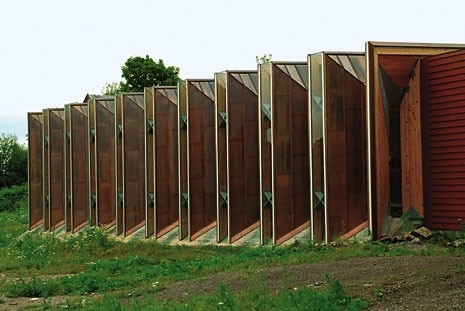Two year’s ago Sverre Fehn celebrated his 80th birthday. After the death of Giancarlo De Carlo in the summer of 2005, and Peter Smithson and Cedric Price a year earlier, perhaps only Jørn Utzon and Fehn remain of those architects belonging to the pre-World War II generation who believed that architecture is capable of contributing an essential quality to life on earth. Without this kind of architecture, our lives would be that much poorer. What is remarkable about Fehn is that he still runs a studio that produces projects of great value and beauty, such as the soon to be completed Architecture Museum in Oslo. The project is part of a renovation plan for an older building, but it also includes a new pavilion in the middle space left by the old L-shaped structure. This new pavilion will echo the well-known, although dated, Nordic Pavilion of the Venice Biennale. It will bring back to Norway the typical qualities of Oslo, qualities usually associated with Sverre Fehn. A year ago, the Hamar Archaeology Museum celebrated two new extensions. Hamar’s project was already legendary when the first museum centre, also the work of Fehn, was inaugurated 35 years ago in 1975 (see Domus no. 551, 1975). In the new additions there is much that encourages us to re-read the older intervention in the light of the new constructions, all marked by immense respect both for the natural and the artificial. The age-old Nordic mastery in boat construction has always stimulated Fehn’s imagination. Nonetheless, the typical Norwegian wooden churches that he knows so well from his childhood have steadily displaced this influence as an essential form, as a structure that mediates between man and his environment: the vertical axis lies between heaven and earth as opposed to the horizontal exchange between earth and water. Olaf Fjeld, who worked with Sverre Fehn after returning from his studies with Louis Kahn in Philadelphia, immediately recognised the insight with which Fehn’s work is imbued. In a recent conversation in Oslo, he once again emphasised what he called “thinking in construction”. Fjeld admired Fehn’s optimism at the time when he felt architecture was capable of making an important contribution to our self-understanding. Indeed, in that period he was close to older architects such as the Norwegian Korsmo and the Dane Utzon, with whom, still as a relatively young man, he elaborated urban plans for housing in Oslo. It is remarkable that Sverre Fehn was able to learn simultaneously from his period working at the office of Jean Prouvé in Paris and the oeuvre of Mies van der Rohe. Perhaps his understanding of the role of the horizon in architecture, an infinite distance that marks the passage between the heavens above and the earth below, was so generous as to be able to accommodate such different approaches. As in the Norwegian imagination, the continuity of the horizon from earth to water and back again has inspired his response throughout his working life. In Hamar, where the first museum centre was constructed on the ruins of a 14th-century bishop’s palace, the ground remained essentially untouched. An long and narrow L-shaped ramp leads the visitor above ground, where traces of the archaeological site can be seen, into the second level of the old structure reconstituted with a vertical concrete support and a roof supported by laminated wooden beams. Numerous details, striking in their simplicity and elegance, feature prominently in almost every exhibit. No more than twelve written pages remain from the first historical period of this area. The only evidence of the early Christian life in this place is constituted by small artefacts and sculptures in metal and wood. As Sverre Fehn noted in his lecture at Columbia Graduate School of Architecture a few years ago, after a man dies his flesh disappears, his bones follow suit, and his teeth also eventually perish, leaving only tools, keys and some nails as evidence of his life on earth. Hamar, from this perspective, is architecture in the absence of writings. The two new additions consist of a glass and a wood structure, which protect the earlier 12th-century ruins. The first is a rectangular stone foundation at one end of the site. The second, a deep, semi-cylindrical opened and arched volume, is protected by a concrete vault decked in copper and wood cladding. In both cases, the new constructions enigmatically constitute a subdued echo of what we could imagine to be their original completed structure. Distinct strata of temporal understanding provide different interlaced horizons in time. The church and bishop’s palace are implicated in a dialogue with the even more remote times and places of biblical legend and Roman heritage. These different traditions are acknowledged with great sensitivity. The archaeologists, involved in the recuperation and reconstitution of life six and eight hundred years ago, and the architect, who was asked to put all this together, have done their best to shape every bit of what was originally there. The discipline of the latter has given an order that will enable visitors to see clearly what has been found, what has been excavated, what has been reconstructed and what has survived wars, nature and the passage of time. It is as if Sverre Fehn has invited all the elements, both natural and man made, to do their best to accommodate his intervention without being an intrusion. Indeed, the newest poured concrete, metal riveting and wooden elements in the columns and beams are no more than the latest guests in this feast of the gods, the gods of time who devour their infants.
Sverre Fehn was born in Kongsberg (Norway) in 1924 and studied at the School of Architecture in Oslo where he graduated in 1948. Along with Norberg-Schulz, Grung, Mjelva,Vesterlid, Jørn Utzon and other Scandinavian architects, in 1950 he set up PAGON (Progressive Architects Group Oslo Norway), the Norwegian section of CIAM. He has received a number of awards, including the Pritzker Architecture Prize in 1997. He taught at the Faculty of Architecture in Oslo from 1971 to 1993. He has designed a large number of private houses as well as various museums and exhibition spaces such as the Nordic Pavilion at the Venice Biennale (1962). The Museum of Architecture at Oslo is currently being completed.
